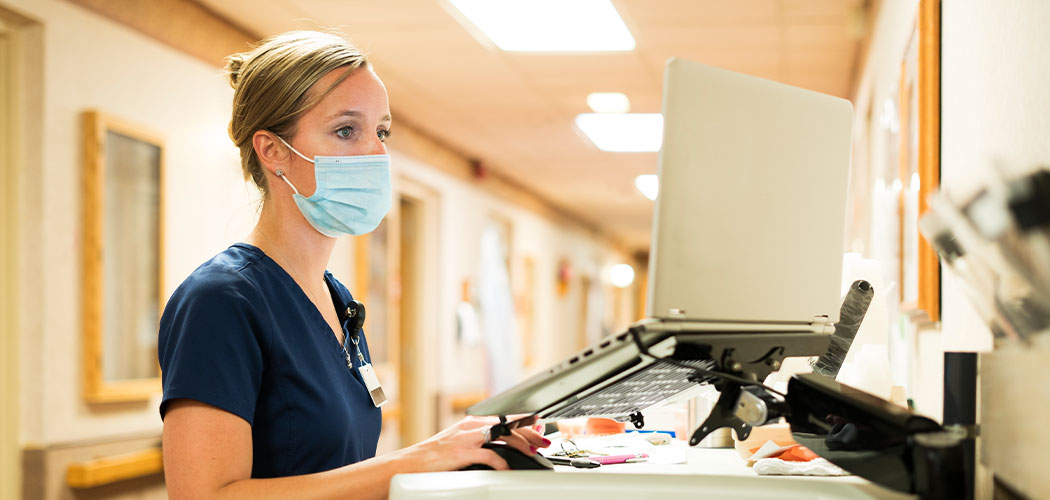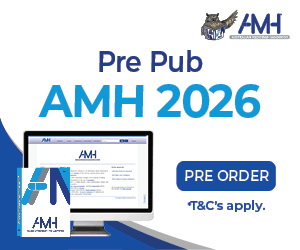Health services should prioritise gaining a deeper understanding of the experiences of nurses and midwives in using electronic medical records (EMRs). By doing so, they can develop user-friendly systems which reduce stress and burnout and enhance clinical and safety outcomes, new research has found.
The study, published in the September–November 2024 issue of the Australian Journal of Advanced Nursing (AJAN), set out to identify nurses’ and midwives’ opinions of EMRs and computers in nurse/midwife practice, aiming to uncover whether practice is impacted by EMRs and provide understanding of how technology is influencing productivity, relationships and wellbeing.
Findings
Nurses and midwives surveyed expressed varying views on the advantages and disadvantages of using digitalised medical information systems.
More than 87% of midwives disagreed that EMRs had improved the quality of care, with 63% suggesting that EMRs had not improved women’s safety. Conversely, the majority of nurses reported EMRs had improved documentation standards and patient safety.
Three themes emerged from the data:
- Computers affect my productivity
- Computers affect my relationship with the patient/woman
- The EMR increases my frustration and stress levels
Both nurses and midwives felt the heavy documentation load and lack of integration across the ieMR EMR platform reduced efficiency, discouraged teamwork, and further excluded patients/women from participating in their care.
Impact on practice
Although nurses and midwives surveyed agreed that the accessibility of EMRs to all health staff is advantageous, the documentation demands of each clinical area are vastly different.
The hybrid system of paper and electronic documentation increases documentation workload, contributing to elevated levels of stress.
“Nurses and midwives expressed feeling frustrated, stressed, and overwhelmed due to the heavy ‘data-entry’ workload expected from them as well as finding time for the provision of direct patient/woman care,” the paper states.
Areas for improvement
With findings identifying both positive and negative effects of the current EMR program and echoing similar national studies, authors suggest health organisations need to adopt a human-centred design approach, regularly asking for feedback from nurses and midwives, as the primary users, and identifying areas for potential improvement to increase usability and operability.
“The results support the need for ongoing education for all clinicians in navigating an EMR; performing efficient documentation; recognising and reporting errors; improving team communication; and providing woman/patient-centred care,” the paper concludes.
“There is a need for ongoing training related to EMRs; tailored to the needs of the user groups.”
Read the full paper here









5 Responses
I think it’s also worth noting that EMR’s are difficult to learn and use very quickly if you are an agency nurse or midwife, especially if you are from a different state. I recently went as agency to NSW from SA in an MGP capacity. So I was working fairly independently from the get-go, oncall 24/24 straight up due to the role, and getting my head around a whole new system instantly was extremely difficult and stressful. Furthermore, absolutely every single thing was on there about my pts. I have to hit the ground running in my role and EMR’s make that harder due to all the usual computer access glitches etc when u start at a new place.
I went and did the Diploma of Nursing at Dubbo TAFE then did a Clinical Placement through DUbbo Base Hospital, DBH we learnt how to use the EMR through DBH which was great.
I have worked through the Hospital System through another Hospital so if I have questions I ask the Hospital staff there which is great as they answer my questions that I have.
Just being implemented where I work. 1.5 days Intensive training! I don’t think work processes have been considered – like S8, S4. What has been implemented elsewhere? Also, already have crowded 4 bed bays, what strategies have others used? Apparently we will have WOWs. Look forward to feedback please
I teach clinicians how to use EMR. I’ve had 40 year veteran nurses who want to be proficient in EMR after 40 minutes. It takes practice. There is a bigger picture than a nurse and a patient. The statistics from EMR data can predict deteriorating patients, peaks in service, how many ambulances do we need. Not just from your ward or hospital but statewide. The more we know about our patients the better we can prepare.
Nurses shouldn’t rely on computer generated clinical information during patient care. It takes away from everything we have learned. Communication with the pt and families, Look, listen and feel, that’s what we should be doing first and foremost. Because of the heavy data input, there is no time to spend with the pt some days and shifts usually include overtime to ensure everything is documented. There is so much data to input in QLDs iEMR program I’m scared something important will be missed.